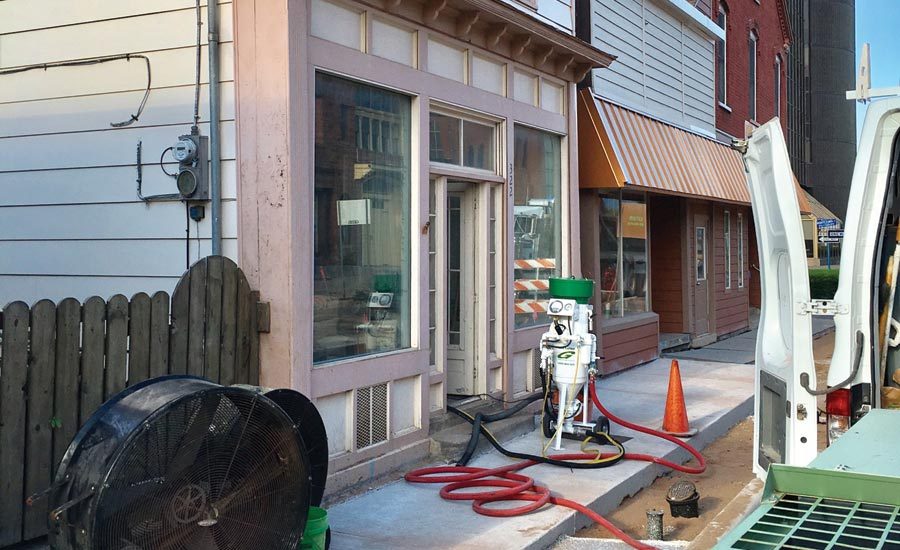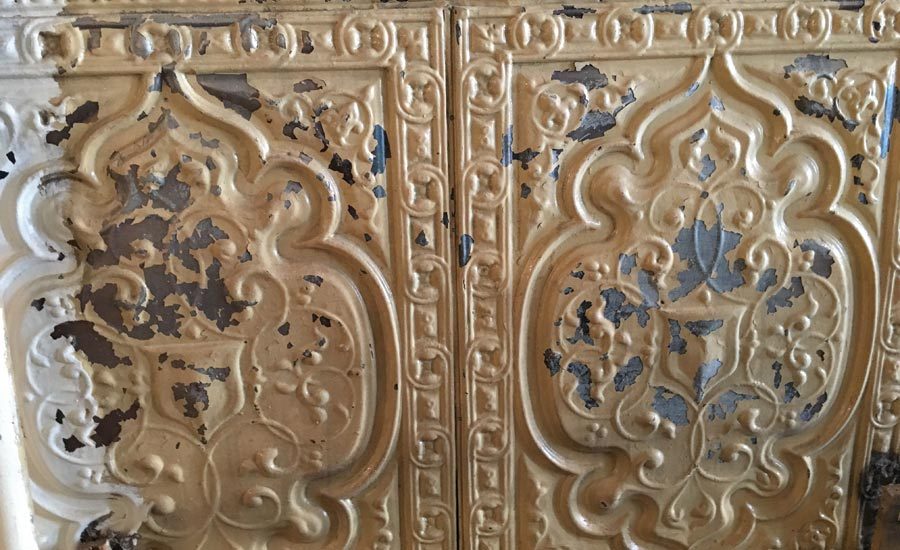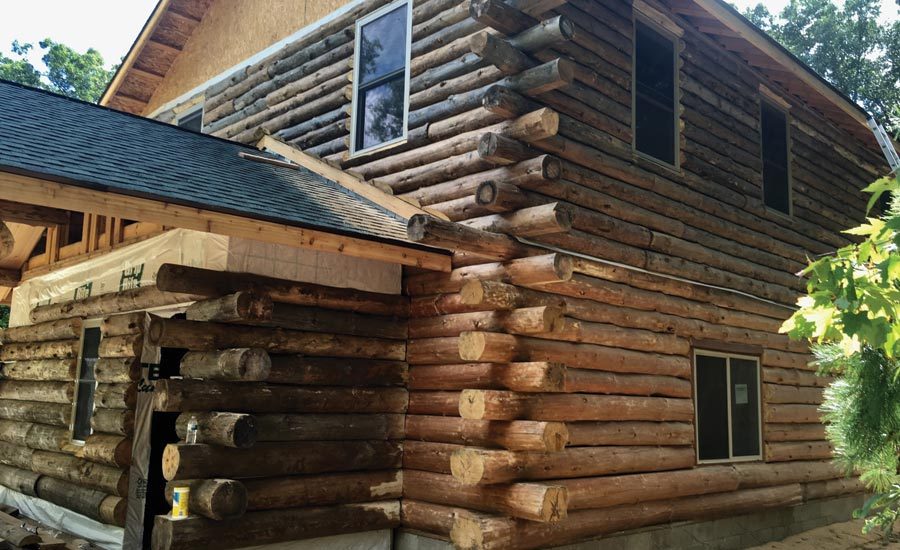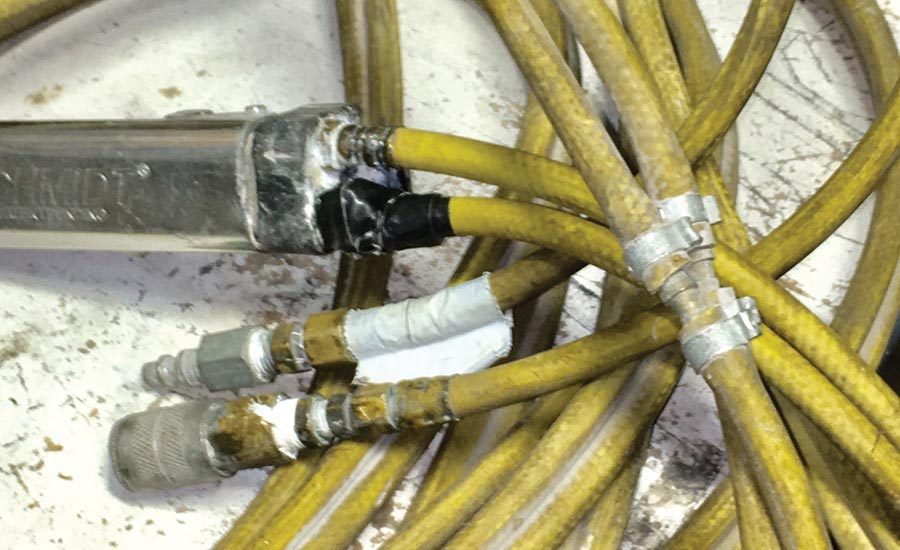A recent anniversary – 21 years in the business – was announced by my business-related social network computer program. Of course, I realized that the milestone – completing my second full decade in the restoration industry - was approaching, but I didn’t realize that the programmers at LinkedIn would announce it to my entire business and social network. It wasn’t until I started receiving messages of congratulations that I took a minute myself to reflect on the last 20 years – over two decades in the restoration business.
It made me think about what it means to restore. According to Webster’s dictionary, restoration is the act of “…bringing (something) back to a former condition.” During this reflection it occurred to me that one of my passions – a love of history – was a big part of my daily grind. Don’t get me wrong, not every project involving restoration has historical significance, but many do. Enough do that it makes me feel a real connection with the past; a sense of accomplishment when a restoration project restores a structure to a “former condition” - a time and place in our collective memory.
Copper Country Gem
In a recent trip to Michigan’s Upper Peninsula, I was thrilled to learn the project we were working on would be part of a much larger restoration program taking place in the historically significant city of Hancock. This gem is located in the U.P.’s “copper country” - an area known for its rugged, forested terrain, its massive annual snowfall, and the remoteness of the region – a peninsula itself extending out into Lake Superior. From Detroit it takes longer to drive to Copper Harbor than it takes to drive to Washington, DC. Most importantly, the area is best known for its natural resources, in particular rich, accessible deposits of copper ore - so pure and abundant that it would supply the demand of the growing nation, and its need for copper, in particular copper wire, for decades.
Our project was located on the main drag through this historical town, whose heyday was during the region’s copper mining boom. But this wasn’t the only ongoing restoration project; it was just one of many, timed to coincide with the restoration of the entire historical business district. (See picture #1) The entire district, street and all, was undergoing a sort of renewal. The activity was all around us, the ongoing restoration set the city street abuzz with the hum of construction equipment, and busy workmen – very much like the days when copper ore fueled this area. Today it’s education, construction, high-tech, and tourism that make restoring the former condition important.
Restoring to Former Condition
I was invited by a local contractor – through his purchase of our media blasting equipment with included, on-site training – to help with the restoration of an interesting old building (See picture #2) right in the middle of this district. A retail establishment from the 1800’s with an actual soda fountain and ice cream counter, the interior was completely clad in stamped tin panels that had been painted numerous times. (See picture #3)
The project itself was fairly simple. Once the determination was made that the paint did not contain lead, a protocol was established for stripping the paint by blasting with walnut shells. Crushed black walnut shell propelled by compressed air – clean, green, and simple. The process was fast and effective – removing multiple layers of paint quickly (about 5 square feet per minute) with no damage to the surface of the stamped panels. (See pictures #4 and #5) Clean-up was limited to sweeping and vacuuming and the end result was truly a restoration of the former condition.
Different Types of Blast Media
Restoration is not, of course, just a term we use for historical structures. When we consider media blasting as part of restoration, we look at a number of contemporary applications. Closely related to walnut shell blasting, is another agricultural blast media corn cob meal. The blast medium is not the entire corn cob, rather it’s the dried, crushed, and screened-to-size center of the cob – just the inner white portion. This blast method is most commonly associated with the blasting of log structures – new and old. Almost all log cabins, lodges and homes are blasted during construction to clean the logs, and present a more uniform appearance across the structure. The effects of blasting can easily be seen when you look at a partially blasted log structure. (See picture #6) Many log buildings also require refinishing from time to time, with media blasting as the preferred method for stripping back to a “like-new” former condition.
Historical restoration and blasting of log structures are certainly interesting, and may also be profitable. Most restoration contractors, however, must rely on more run-of-the-mill applications. One of the more profitable media blasting applications is fire restoration. Blasting of fire losses can be done with many media, but baking soda blasting as a medium has proven its efficiency time and again. When stripping soot and light charring from wood, crystalline baking soda cuts through the offensive material quickly exposing a virgin wood surface, while minimizing excess damage. (See picture #7)
Baking soda also brings the additional benefit of odor reduction through neutralization – chemically changing the pH of soot and char. Media blasting with baking soda is not just for wood restoration. Masonry, including concrete foundations, can be cleaned with the same method. (See pictures #8 and #9) Concrete foundations are very common in fire damaged structures. At $2 per square foot paid for most fire restoration blasting, it’s easy to see why this is both effective and profitable. Restoring structures to a former condition is one of the main advantages to using media blasting.
Common Blasting Problems
In the process of looking back at the past couple of decades, I couldn’t help but remember some of the other “restorations” I’ve seen. In particular, I’ve been called in by many of my contractors to actually help them restore their blasting operations – restoring their results to former condition. Media blasting is a fairly simple operation. Blast machine filled with media connected to an air compressor – what could possibly go wrong? That’s actually a very funny question to someone who knows all the things that can go wrong. Some of the most common problems we encounter are operator inflicted – examples include; overfilling the blast machine, allowing compressed air to flow backwards in the system, not repairing damages to the machine properly, etc.
I recently ran across a pneumatic control line that had three different areas of improperly repaired damage:
- A duct tape repair at the trigger connection (just not adequate for a high pressure line).
- A splice in the middle of the lines where they were completely cut at one time (reduces air flow, not recommended).
- Another duct tape repair at the inlet fitting. (See picture #10)
The operators using this control set-up would be fighting an uphill battle in most cases.
Caring for Blasting Equipment
Another area that often requires restoration in a contractor’s blasting operations is the proper care and maintenance of the equipment - again related to the operators of the system. A recent trip to a two different contractors helps to illustrate the problem.
In the first example, the machine, and all of the hoses were in disarray. It was very obvious from the mold growth on the un-cleaned pile of hoses that the operators did little, if any, cleaning, or maintenance of the system after its last use. (See picture #11) Their media blaster was in similar condition, full of unused media that had absorbed moisture and turned into clumps. I’m sure that over time, their blasting results in the field were probably lack-luster, as well.
In the second example, the machine and its parts were clean and organized. (See picture #12) A clean machine doesn’t necessarily mean a working machine, but it is some proof of the fact that at least some care and maintenance are given to this system. It can also be easily assumed that this team will have a better shot at profitability when blasting.
Training + Maintenance = Win
Please be aware that operator neglect of a system is often not entirely the fault of the operator. At first glance, that statement may seem illogical, but hear me out. Many of the contractors I deal with see technician turn-over as high as 100% each year, or two. When new technicians come on, are they trained in proper blasting procedures? Are they instructed how to maintain a blast system? Is it even okay to wash the blast hoses? Is it okay to leave media in the machine?
Most technicians don’t instinctively know the answers, and they are unlikely to take it upon themselves to guess. Most find it easier to do nothing, rather than make a mistake and ruin something. I also find most technicians will do what they are instructed to do, but don’t do what they’re not told to do. Is this lazy? Or, is it just a lack of instruction or understanding?
The bottom line is operator training and continuing education is the responsibility of the contractor. If turnover is high, your reliance on recurrent training should be as well. Demand training with the purchase of new equipment. Rely on your media or equipment supplier to provide annual service calls. This is where attention is paid not just to the equipment, but also the training needs of the operators.
Restoration, the act of restoring to former condition, is not just something we do make money, it’s something we need to constantly do to stay competitive, and productive. A clean, well-maintained system will be just one of the results. (See picture #13) A team of knowledgeable, effective media blasting technicians will be the other. (See picture #14)















